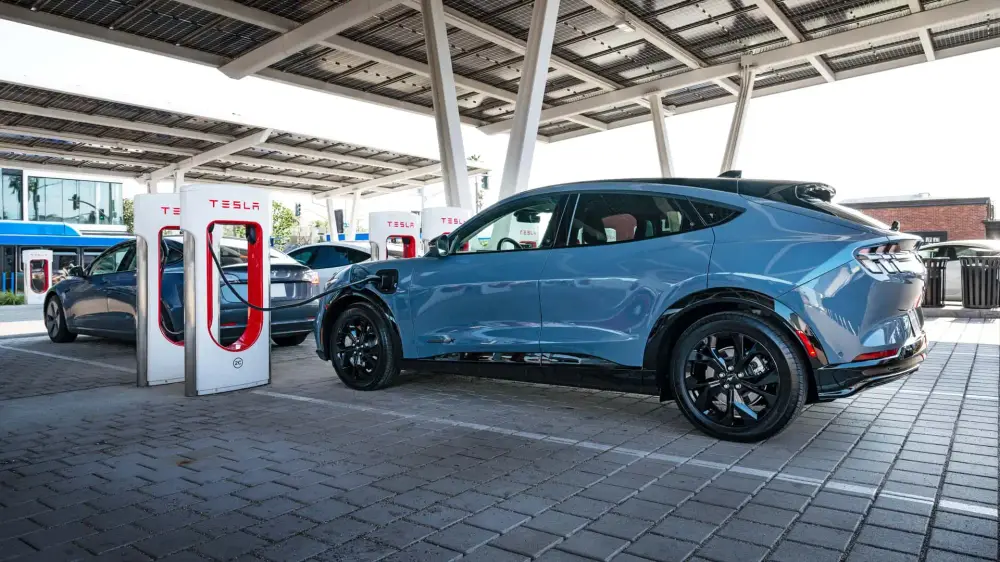The SEC announced it voted 3-to-2 to adopt disclosure rules and form amendments designed to enhance and (to an extent) standardise climate-related disclosures for investors. This was a key vote and will be viewed as a watershed moment, as the standardised disclosures in reports and statements will help provide investors with more reliable climate-related disclosures, in a consistent and clear format, that they can more easily compare across companies and industries/sectors.
California has announced it has more than 100,000 public or shared private EV chargers installed in the state, alongside having over 500,000 at-home chargers. Surpassing the 100,000 milestone is an impressive achievement and illustrates its position as the most progressive EV state. Last year 1 in 4 new cars sold were zero-emission and has 1,846,874 total ZEV sales to date, achieving both much earlier than anticipated. Bear in mind, that only a couple of weeks ago, the CEC approved a $1.9 billion investment plan that will further accelerate progress on the state’s EV charging and hydrogen refuelling targets.
Ford has been busy this month as it announced its F-150 Lightning and Mustang Mach-E models will be able to use the 15,000+ Tesla Supercharger network, across America and Canada. This is a momentous moment as it means that Ford EV drivers can access the Tesla charging network, which is arguably the most reliable and extensive public charging network in North America. Secondly, the company announced, the 2024 Ford E-Transit model will have better specifications such as greater range, faster charging time and dual onboard chargers compared to the 1st generation. For example, the 2024 E-Transit’s battery has 89 kWh of usable energy, up from the 1st generation’s 68-kWh battery. Furthermore, E-Transit owners will get a complimentary NACS adapter to access Tesla’s 15,000+ Superchargers across America and Canada.
Eric Adam, the New York City Mayor, along with the NYCEDC and NYC Talent released the first-of-its-kind, Green Economy Action Plan. This plan aims to create 400,000 green-collar jobs by 2040 alongside investing $100m to create a Climate Innovation Hub at the Brooklyn Army Terminal. This Hub will be developed with NYCEDC which will collaborate with the Trust for Governors Island and the Brooklyn Navy Yard Development Corporation. Thus, together, this will create 5,000 permanent jobs, educate and train 2,100 New Yorkers, and generate $55bn of economic impact. We fully support the Big Apple’s transition to the Big Green Apple and hope this inspires other states to take green action.
Lyten has announced that it has received $4m in grant funding via the US Department of Energy’s Efficiency and Renewable Energy/Vehicle Technologies Office. This grant was awarded to help accelerate the production of lithium-sulphur batteries. America has been championing lithium-sulphur batteries as it views it as a way to reduce offshore supply chain risks and materially extend the driving ranges of EVs. Remember, Lithium-sulphur batteries have more than double the energy density of traditional lithium-ion counterparts.
Amazon has added 67 new electric Rivian vans to its warehouse in Bellingham, thus illustrating again how progressive and proactive Amazon has/is in procuring and electrifying its fleet. Bear in mind that Amazon owns a c17% stake in Rivian and thus the vans are designed to suit the needs of its drivers and the delivery service sector. For example, there are automatic side doors, a large screen with maps and a 360-degree camera view. Amazon, to date, have deployed c10,000 Rivian vans globally, however, this number will increase exponentially in the coming years as we approach 2030-2035. Interestingly, at the Bellingham site, Amazon has installed level 2 chargers, which are less expensive than DC chargers to streamline costs, as the vans come back to the warehouse at night.
A list has been published showing the 7 top states that have the best (current) EV incentives, and surprisingly Colorado has topped it. Colorado offers up to $7,500 off the purchase of a new EV however the EV sticker price must be below $35,000. A new EV between $35,000 and $80,000 can qualify for a smaller credit of $5,000. Maine came in second and offers residents $7,500 off a new EV purchase depending on certain income requirements. America has been implementing very progressive tax credits/grants for consumers (and fleets) to catch up (and eventually surpass) Europe and China in terms of EV adoption.
The Biden-Harris Administration has announced it will make $1.5bn in grant funding available to help roll out standardised zero-emission bus models. Interestingly, 5% of any grant awarded must be set aside for workforce training. This is a great stipulation as it means the public transportation workforce will be upskilled. The strategy of transitioning to electric buses whilst also upskilling labour will help diversify the workforce, stabilise costs and shorten manufacturing timelines.
Orange EV, an American OEM of electric heavy-duty trucks, has announced it has opened its new facility in Kansas City. This new facility boosts its production capacity to more than 2,000 trucks annually. Interestingly, Orange EV’s e-TRIEVER model dominates the yard truck segment and CALSTART has stated this segment is transitioning fastest to electric. Furthermore, this company has the largest fleet of deployed heavy-duty electric trucks in the USA. With its new facility, it will further cement itself as the market leader in the heavy-duty electric truck market.
Black Book and Recurrent have teamed, allowing Black Book to introduce the industry’s first EV valuations which incorporate battery condition adjustments based on data from Recurrent. This valuation solution, named Battery Adjusted Values, factors in battery condition from a specific VIN against battery data from Recurrent’s database to spit out a VIN-specific valuation. This is a great solution and shows the rapid progress Black Book and Recurrent are making. The EV battery is the most valuable component of the EV, thus looking at the rate of degradation based on factors such as rate of utilisation, driver behaviour, battery chemistry, etc, will heavily influence the EV valuation in the secondary market.


